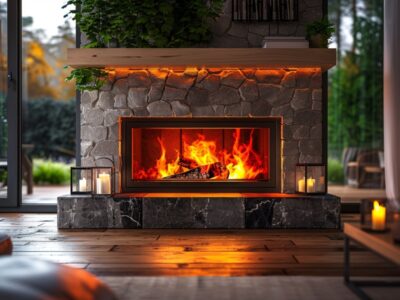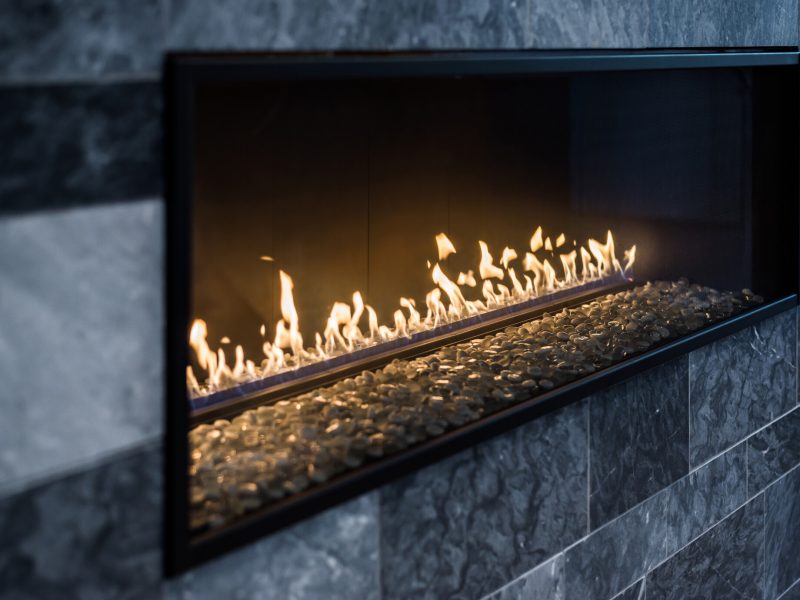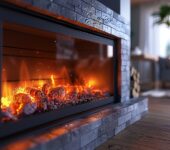Table of Contents
Your fireplace might be the last thing on your mind as the weather warms and thoughts turn to outdoor pursuits. Yet, the warmer months are the ideal time to consider upgrading this winter stalwart.
If you’re considering a new home fireplace, a gas fireplace is one of the most energy-efficient and environmentally-sound choices available today. The EPA does not require certification for vented gas fireplaces, as they burn cleanly and emit very few pollutants.
Fireplace maintenance is a breeze with these easy-to-use appliances, although you operate them a little differently from regular wood-burning fireplaces.
One of the first things you’ll need to figure out when you install a gas fireplace is how to ignite the pilot light. Keep reading for a quick guide to what’s involved in this simple task.
Familiarize Yourself With Your New Fireplace
After installing your new gas fireplace, take some time to explore the unit before you try it out. Read the user manual and find each of the parts mentioned in this guide.
The control panel is one of the most important features of these types of fireplaces. You’ll usually find it at the base of the unit, behind the decorative screen.
You’ll use the control panel to activate the unit and adjust the level of the flame.
If your fireplace doesn’t have a control panel, it may be operated with a fireplace key and key valve to ignite the fireplace.
How to Use a Fireplace Key and Key Valve to Operate Your Gas Fireplace
Make sure you know how to open the chimney vent before you light a fire in your new fireplace. You’ll find a lever installed on the inside of your fireplace that you can use to open and close the vent.
Most gas fireplaces vent to the outside via an adjacent wall, but some may vent through the roof, like a wood fireplace.
Legislation surrounding unvented fireplaces is constantly shifting, so make sure you’re aware of the rules in your municipality when installing your fireplace.
Pennsylvania currently allows unvented gas fireplaces, too, but Columbia Gas advises against installing these in bedrooms and bathrooms.
Turn on the Gas Supply
You can’t light a fireplace unless there’s a fuel source available, but it’s a good idea to turn off the gas supply when you’re not using your fireplace. Otherwise, you’ll waste gas burning the pilot light when the fireplace isn’t in use.
To turn the gas on or off, first, remove the decorative cover from your fireplace. This will reveal the control panel and gas switches. Locate the gas shut-off valve and turn the handle parallel to the direction of the gas pipes.
In some cases, you might find this valve located behind the fireplace. Consult your user manual if you have difficulty finding it.
You should always remove the fixed glass assembly from your fireplace before lighting the pilot flame. This protects you from the buildup of gas if you struggle to get the pilot light going.
Your fireplace may have a secondary gas shutoff located outside the fireplace on the floor or the side of the unit. Make sure this valve is all the way open before attempting to light your fireplace.
Lighting the Pilot Light
Most modern fireplaces have a control panel and even smartphone access to help you control your fireplace. Yet, you may have a fireplace with one of two other startup options.
These are the three main ways to light the pilot light on your gas fireplace:
Control Panel
You can open or remove the decorative screen on your fireplace to access the control panel.
The panel usually has a control dial and a red igniter button, with ‘Off’ and ‘On/Pilot’ indicators. Follow these steps to ignite your pilot light using the control panel:
- Turn the indicator to the ‘Pilot’ or ‘On’ position
- Press the red knob to send gas into the system
- Push the repeatedly at one-second intervals until the pilot ignites
- Once lit, hold the pilot button down for 15 to 20 seconds to warm the thermocouple
- Release the pilot knob
- If the pilot stays alight, turn the indicator to the ‘On’ position
Once the flame is burning steadily, you can adjust the fireplace flames using the high/low switch and replace the fireplace cover.
Key Valve
Some gas fireplaces have a decorative slot that you use to control the gas valve. It’s most often located on the floor near the fireplace or directly to the side of it.
You’ll use a key, called a hex key, to control the gas flow via this slot, as follows:
- Place a lit match or long lighter next to the burner
- Turn the key in the slot to open the gas valve
- The pilot light should ignite immediately
- Use the key to adjust the height of the flames
- Replace the key cover
It’s a good idea to install a hook close to the fireplace to keep the key within easy reach and avoid losing it.
Wall Switch
Many modern fireplaces come with a wall switch control panel for igniting the pilot light and controlling the flames in the fireplace. These are super simple to use, involving little more than pushing the ‘On’ button to get things started.
If the pilot flame doesn’t ignite the first time with this method, you may need to use one of the above methods to light it manually. This may happen if you haven’t used your fireplace for some time.
Turn Off Your Gas Fireplace
Turning off your gas fireplace is a simple matter of removing the fuel source.
You can do this by pressing the ‘off” button on your control panel or wall unit. If you have a fireplace with a key, insert it into the slot and turn it until the gas shuts off.
Planning for a Cozy Winter
Don’t wait until the last minute to install your new gas fireplace and make sure you know how to run it. Winter is a busy time for fireplace installers and you may experience delays due to high demand.
Whether you’re building a new home, planning a new look for your current fireplace, or considering installing a new wood, electric, or gas fireplace, we can assist you.
Browse our blog for more information on everything related to modern, luxury fireplaces, and get in touch for expert fireplace installation services.
Latest Articles

Glass Door Garage: Elegance With Every View
Table of Contents1 What Is a Glass Door Garage?2 What Are the Benefits of a Glass Door Garage?3 What Are the Different Types of Glass

What Is Cleanburn?
Table of Contents1 What Is Cleanburn?2 How Does Cleanburn Work?3 What Are the Benefits of Cleanburn?4 What Types of Appliances Use Cleanburn Technology?5 How to

How Long Does It Take To Install A Fireplace?
Table of Contents1 Factors That Affect Installation Time2 How Long Does It Typically Take to Install a Fireplace?3 Factors That Can Extend Installation Time4 What



















































































